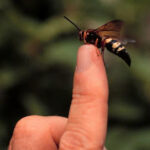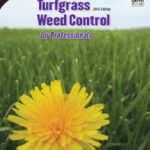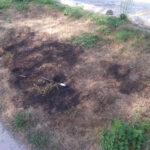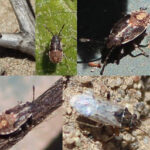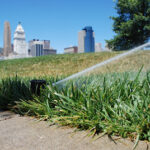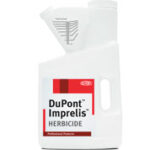Turf Tips Archives
Gwen Daniel – Obituary
Gwen Daniel Gwen H. Daniel, Age 91, of Westminster Village, West Lafayette, IN. Gwen was born on June 28, 1921 in Hot Springs, Arkansas. She received her BA degree from Quachita Baptist University in Arkadelphia, Arkansas. She married William H. Daniel on January 9, 1944 while he was a pilot in the U.S. Army Air […]
Gray Leaf Spot
Recent weather (remnants of hurricane Isaac) raised concerns about gray leaf spot in the Ohio Valley and the lower Midwest in general. You may recall that the pathogen does not overwinter efficiently in the Midwest, and inoculum (airborne spores) from storms that originate in the South is significant. Gray leaf spot is a foliar disease […]
Watering Bans Making Turf Establishment Tough in Some Locations
Now is the time to be seeding a lawn, but in some communities water restrictions and bans are preventing homeowners and lawn care professionals from renovating/reseeding damaged lawns following this summer’s drought. August 15 to September 15 is considered to be the optimum time to seed cool-season lawns in Indiana. This optimum window is slightly […]
Read the Label! A Hard Lesson Learned
I was recently forwarded a video from one of our Extension educators in Vanderburgh County, Larry Caplan, that I thought I would share with you. The video chronicles the “misadventures” of a homeowner who simply wanted to control the weeds in his lawn. It should be a reminder to all of us to read the […]
Cicada killers are Wimps
Spread the word – Cicada killers are wimps! Unfortunately, because of their size and the fact that they often live in lawns and landscapes close to where people live, cicada killers evoke a great deal of anxiety. These wasps are huge and look very much like oversized yellow jackets but they have some very important […]
Turf Field Day: Another Hot Day in the Sun
Thanks to all the 459 attendees and 32 exhibitors who attended the Midwest Regional Turfgrass Field Day Tuesday, July 17, 2012 at the W.H. Daniel Turfgrass Research Center in W. Lafayette, IN. We had golf and lawn research tours in the morning, two different afternoon tours, and two afternoon workshops and addressed many current topics […]
Drought Outlook and Water Restriction Updates
An updated drought map of Indiana was released on July 26, 2012. Drought is rated as D0=abnormally dry, D1=moderate drought, D2=severe drought, D3=extreme drought, and D4=exceptional drought. Eighty-seven percent of the state is D2 or worse with 18.7% of the state in exception drought, with another 40% rated as extreme drought. Water Restrictions/Bans Because of […]
2012 Pesticide Clean Sweep Information and Planning Form
WHAT: An Indiana Pesticide Clean Sweep Project designed to collect and dispose of suspended, canceled, banned, unusable, opened, unopened or just unwanted pesticides (weed killers, insecticides, rodenticides, fungicides, miticides, etc.) is being sponsored by the Office of Indiana State Chemist (OISC). This disposal service is free of charge up to 250 pounds per participant. Over […]
New Weed Control Publication for Turf Professionals
A new publication from the Purdue turf program is now available to professional turf managers. The 88 page publication includes content on: Turfgrass Culture Weed Types Weed Life Cycles Developing a Weed Control Program Indicator Weeds Herbicide Information (use, nomenclature, classification, mode of action, movement, resistance, etc.) Control of Tough Weeds Frequently Asked Questions […]
Burn Bans, Fireworks, and Turf
As of today, July 10th 2012, there are 85 counties in the state of Indiana that are reporting active burn bans (http://www.in.gov/dhs/files/burn-ban/). Many of these bans include the use of public and personal firework displays. Although these bans are in place and we are past July 4th, it may be necessary to survey sites under […]
Ground Moving with Tiny Migrating Insects
Whenever I give my ‘General Insect Pest’ presentations I include a couple of photos of chinch bugs and their nymphs. Usually I say something like “These are not pests every year in Indiana but can become troublesome in years when we have a drought.” Guess what? That is now! The dry conditions we are […]
New! Purdue Extension Website with Drought Information
A new website has been created to help homeowners and professionals find useful information concerning how to cope with drought. This page includes resources about crops, turf, landscapes and more. Visit www.purdue.edu/drought for more information.
My Lawn is Brown and Crunchy… Is it Dead? What do I do now?
The first day of summer/longest day of the year for 2012 has come and gone and just this past week a new National Drought Monitor Map was published (see below). The city of West Lafayette in Tippecanoe County has now fallen into the “Severe Drought” category. In fact 36% of Indiana is now in […]
Japanese Beetle Emergence and Management
Below is an e-mail conversation that may be of benefit to other turfgrass managers asking similar questions. Original message: From: Golf Courses Date: Friday, June 22, 9:30 AM To: Gibb, Timothy “Gibb, Timothy” <gibb@purdue.edu> Subject: Japanese Beetles Management in 2012 With the early spring we expected to see early Japanese Beetles. We did […]
2012 Imprelis UPDATE
A new publication, Imprelis Update: 2012 Field Notes on Injury and Recovery, was just developed by Purdue Specialists to address some of the many questions being asked about Imprelis in 2012 including: Did trees recover from Imprelis® injury? Are new symptoms being discovered? What Should I Do if I Suspect Imprelis® Injured Trees BUT I […]
It’s getting toasty out there! Update on drought and management adjustments
If you like your toast burnt and your bacon crisp, then you might be enjoying this weather. Most of Indiana has entered into drought officially as determined by the drought monitor (see map below). Maps are updated weekly and available at: http://droughtmonitor.unl.edu/monitor.html Indiana specific weather can also be found at http://iclimate.org/index.asp including maps like […]
Purdue Annual Turfgrass Research Report
As the green industry continues to have a large impact on Indiana and the nation, Purdue University has assembled an outstanding team of researchers, extension personnel, and educators that are dedicated to solving problems and helping meet the needs of Indiana residents. One segment of the Indiana green industry that continues to provide a significant […]
Should I apply an herbicide right now?
Here are some thoughts on summer weed control in non-irrigated areas during periods of drought: Herbicides are ineffective on drought-stressed weeds and can be damaging to drought-stressed turf, especially when temperatures are warm. My rule-of-thumb is that if the lawn is >50% green, then herbicides can be applied. Avoid the temptation to apply herbicides […]

